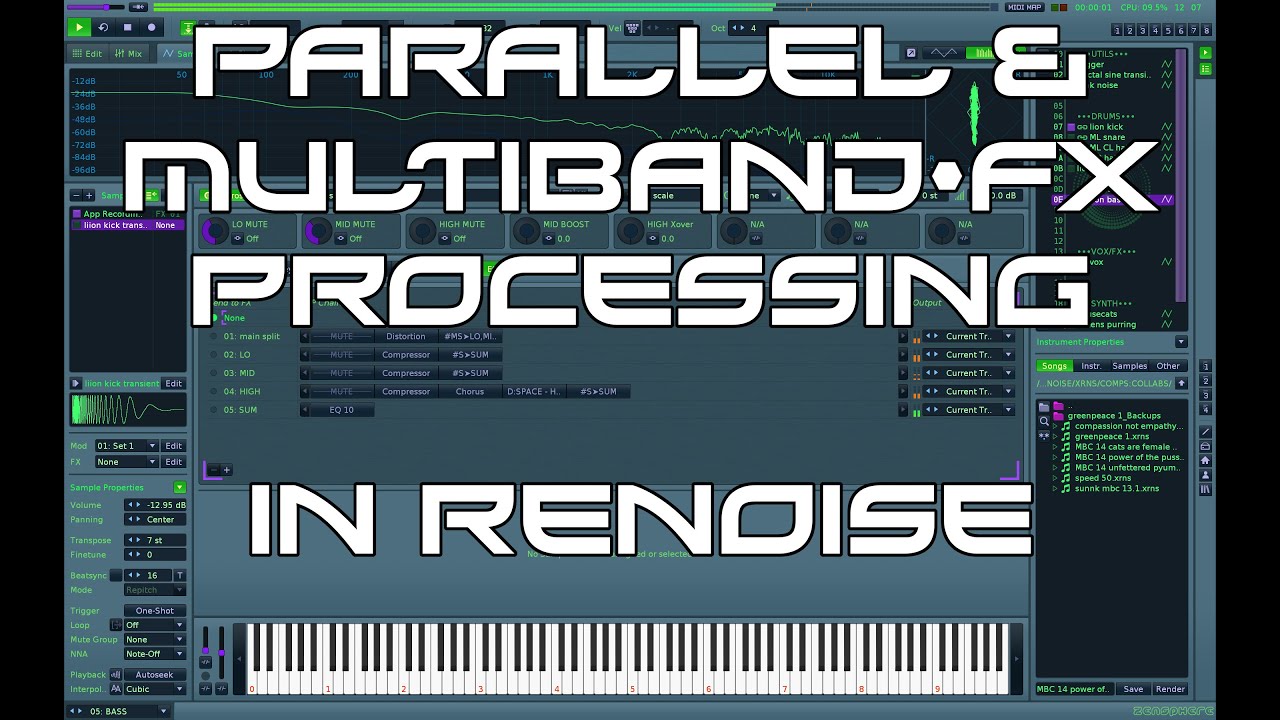usually takes me 1.5 hours to watch these 20min vids due to stopping the video, opening renoise and getting lost in some inspiration/exploration ![]()
![]()
![]()
I can so relate to that.
Hi @slujr = )
Just noticed you have asked for some topics to cover… Would really appreciate something on:
“Creating Risers and Impacts …using basic oscilators/noise, enevelopes, and fx.”
Ive got a folder full of these but they are freaking huge! Sure would be nice to make these with small waveforms.
Thanks for the videos Zensphere, appreciate all the hard work that goes into this!
Great idea! That would be a fun one to make. All kinds of good tricks in making transitional FX ![]()
I like Lil Kevo’s tutorial that deals with how to setup hydras in templates to modulate “anything”.
I think this technique coupled with the automatron and automasher tools is great
Hope this is helpful. I’ve adopted quite a bit of kevo’s workflow recently.
I agree that zensphere would make a thorough video on the subject and would be psyched to see it
Huh, interesting. ^^^
I prefer to keep my modulation in the instrument fx section if it’s a one shot, or in the track if it’s tied to an instrument. I can see where this might be time efficient, but most of my automation isn’t linear ![]()
Always interesting to see how other people work!
request: brief video demonstrating mid/side techniques within instrument fx?
It is, we should have a Mutant Breaks special edition where participants record a 1-2 hours song creation video, I’m sure most of us will learn about new tools, cool techniques and tips to speed up workflow.
For sure. Been wanting to do a quick one on parallel processing too
Hey! Great tutorials - both well produced but also loads n loads of great skills/techniques in each vid.
I just downloaded your song template - would love to see a video on how this is set up/what each section is designed to do. E.g., there is a section for ducked pads, but it’s a little unclear (to me, at least at first glance) how you’re achieving this. Also, just from a mixing/organization standpoint this is very well laid out, and it’d be nice to see you run through your thinking behind each section.
Grats for the wealth of knowledge friend!
hey, thank you! Glad if you’re getting some utility out of them ![]()
I think the template you’re referencing is one that I don’t use anymore. I’m always refining/updating my templates. Here’s what I’m working with currently, drawing some inspiration from @TNT’s template with rear bus, new york compression, mid/side processing, and a couple of reverb sends. Although mine is more complex in terms of channel processing. Here it is if you’d like to take a look and/or use it:
zen template 1.23.xrns (103.6 KB)
These days I use a doofer for sidechain ducking/compression on individual tracks instead of ducking busses as I did previously. If you have any questions about what’s going on in this template, feel free to ask ![]()
Cheers! Will take a look and let you know if any particular questions arise. Again, thanks for being so generous with your knowledge! ![]()
new video, just scratching the surface of techniques for parallel and multiband fx processing, including multiband compression, and some other goodies. I’ll do a separate video on mid/side processing later on.
hope you find something useful in here
peace•••z
Nice! But the first thing you’re doing isn’t the New York compression. New York compression means you’re parallel compressing the drums (except the kick) and you want to CRUSH the transients of the compressed signal and not to keep them. The goal is to strengthen the tails to get a rich drum sound in general. Therefore you have to go down with the threshold and you need at least a ratio of 8:1, the fastest attack possible and an EQ to push the low and high frequencies at 200-1000 Hz and 10000 Hz by 6 dB or more. That’s what’s called the “New York compression”. ![]()
nice! thanks for the clarification… as usual, I’m just muddling my way through ![]()
So am I. And probably most of those techniques were invented this way. ![]()
There’s mostly a need for adjustments for several reasons. There is no law.
When I think about it, you can also add bass and kick in terms of New York compression. Some say this way the mix gets more “powerful”. Personally I prefer to process kick and bass separately.
Just watched the video on generative melodies, awesome quality ! keep up the good work
Awesome new tutorial ![]() A few months ago I also created a 3 band FX chain in Redux. So cool that you can insert plugins in each chain in Renoise too.
A few months ago I also created a 3 band FX chain in Redux. So cool that you can insert plugins in each chain in Renoise too.
I’ve had Unfiltered Audio’s TRIAD, Kilohearts Multipass+Snapins AND Bluecat Audio’s MB-7 for a couple years now but with the native DSP and a little ingenuity they are completely outclassed IMO.
I totally agree. So flexible and powerful, but the key is ingenuity and patience. I’d love to see some more native dsp added as well. a frequency shifter, pitch shifter, and vocoder being the big ones. a dedicated multiband compressor would also be great.
I know I sound like a broken record, but if we had parallel processing and modulation routing into and out of doofers, it would be such a massive power upgrade to what renoise is already capable of
glad you enjoyed the tut! ![]()

